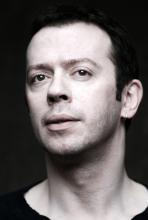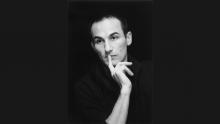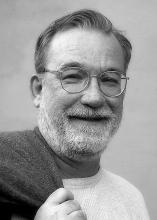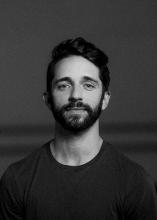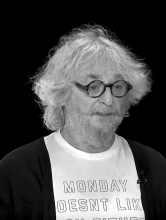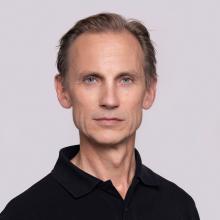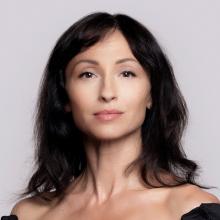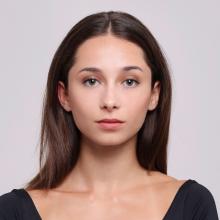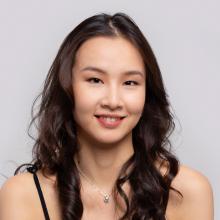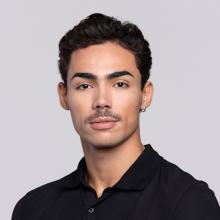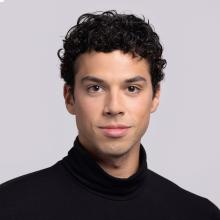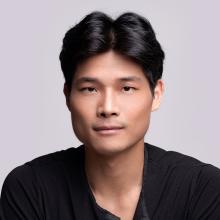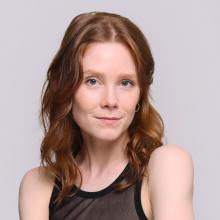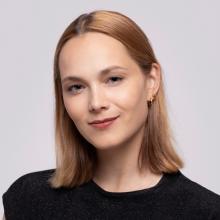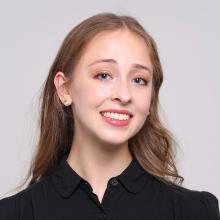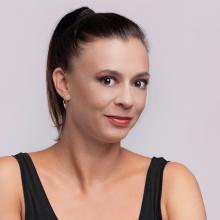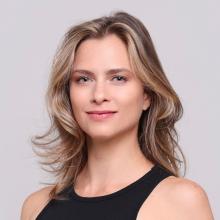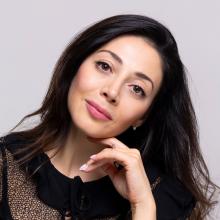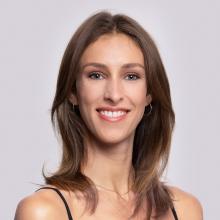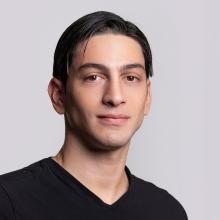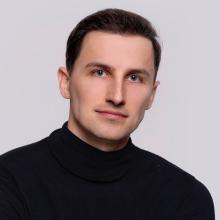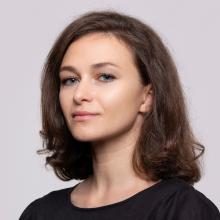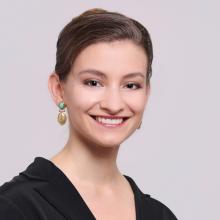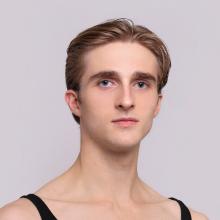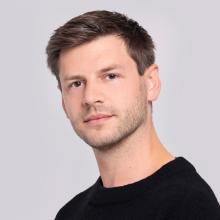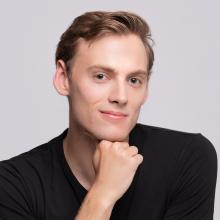Stravinsky Fairy Tales
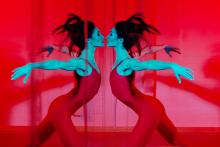
Inhoud
- Preface
- Credits
- Cast sheet
- Interview with choreographer Alexei Ratmansky
- The Fairy’s Kiss: The timeless world of art
- Jérôme Kaplan about the set and costume designs for The Fairy’s Kiss
- Firebird: A simple hero who triumphs over a cruel tyrant
- About Stravinsky’s compositions Le baiser de la fée and L’Oiseau de feu
- Biographies artistic team
- Biographies soloists The Fairy’s Kiss
- Biographies soloists Firebird
Preface
For many years in a row, we’ve been presenting productions as part of the annual Holland Festival, and this year we’re contributing a very special double bill: The Fairy’s Kiss and Firebird, two major works by Alexei Ratmansky, who is internationally recognised as the most prominent classical ballet choreographer today.
Preface
Ratmansky – of Ukrainian-Russian origin and currently artist in residence with New York City Ballet – is passionate about the ballet repertoire of the nineteenth and early twentieth century. To date, he has revived many productions from this period (like his dazzling Don Quixote, which we’re staging once again in October). At an early age, Ratmansky also fell under the spell of the music of Igor Stravinsky. So it’s no surprise that two of the composer’s masterpieces, Le baiser de la fée and L’Oiseau de feu, form a continual source of inspiration for him. In 1994, 1998 and 2017, Ratmansky created versions of the poetic The Fairy’s Kiss. The latter version, presented by Miami City Ballet, is the one he is now adapting for our company. And especially for this Holland Festival double bill he is recreating a section of his vibrant Firebird from 2012.
Both ballets tell a spellbinding fairy tale, and as is the case with so many fairy tales, they have a deeper, universal meaning. For instance, The Fairy’s Kiss – based on Hans Christian Andersen’s The Ice Maiden – is about how you deal with your inescapable fate, and the story of Firebird – based on an old legend – is essentially about freedom. It’s easy to relate the two themes to the wars currently raging in the world. Now he’s staging the ballets again, Ratmansky (a fierce opponent of the Russian invasion of Ukraine) cannot escape that connection, as his ballets are characterised not only by their enormous inventiveness, musicality and strong sense of theatre, but certainly also by the great humanity they express.
This double bill gives you and our dancers the opportunity to be transported to two magical worlds. From a technical point of view, both ballets are extremely challenging for the dancers, yet they also demand a very personal theatrical interpretation and expression. Ratmansky’s formidable knowledge and command of the ballet language make him the ideal person to transpose this language to the twenty-first century and thus add a new, topical layer of meaning to these fairy tales. So I hope you have a wonderful evening.
Ted Brandsen
Director Dutch National Ballet
Credits
Credits
Credits
The Fairy’s Kiss
European premiere
Choreography
Alexei Ratmansky
Music
Igor Stravinsky – Le baiser de la fée (1928)
Set and costume design
Jérôme Kaplan
Lighting design
James F. Ingalls
Staging
Michael Breeden
Ballet masters
Larissa Lezhnina
Jozef Varga
Sandrine Leroy
With cooperation of
Pupils of the Dutch National Ballet Academy
Rehearsal teacher pupils of the Dutch National Ballet Academy
Marieke van der Heijden
Yoko van Reijsen
World premiere
10 February 2017, Miami City Ballet, Adrienne Arsht Center, Miami (Florida)
Premiere at Dutch National Ballet
15 June 2024, Dutch National Opera & Ballet, Amsterdam
Duration
circa 45 minutes
Firebird
Choreography
Alexei Ratmansky
Music
Igor Stravinsky – L’Oiseau de feu (1910)
Set design
Simon Pastukh
Costume design
Galina Solovjeva
Lighting design
Brad Fields
Projection design
Wendall K. Harrington
Staging
Marcelo Mourão Gomes
Nancy Raffa
Ballet masters
Guillaume Graffin
Judy Maelor Thomas
World premiere
13 December 2002, Royal Swedish Ballet, Stockholm
Premiere at Dutch National Ballet
28 February 2014, Dutch National Opera & Ballet, Amsterdam
Duration
circa 50 minuten
Firebird is a co-production with American Ballet Theatre, which added the ballet to its repertoire in 2012.
The Fairy’s Kiss/Firebird
Music Published / Licensed by: © Boosey & Hawkes, Londen / Albersen Verhuur B.V., ’s-Gravenhage
Musical accompaniment
Het Balletorkest conducted by Matthew Rowe
Production of sets, costumes, props, hair and makeup, stagecraft, lighting, and sound
Technical Department of Dutch National Opera & Ballet
Production manager
Anu Viheriäranta
Stage managers
Wolfgang Tietze
Kees Prince
Production supervisor
Gerko Min
First carpenters
Jeroen Jaspers
Lighting supervisor
Wijnand van der Horst
Lighting manager
Angela Leuthold
Follow spotters
Carola Robert
Famke van der Marel
Hein Hazenberg
Marleen van Veen
Panos Mitsopoulos
Follow spotters coordinator
Ariane Kamminga
Sound engineer
David te Marvelde
Props
Remko Holleboom
Costume production The Fairy’s Kiss
Kostuumafdeling Het Nationale Ballet, Das Gewand, Atelier Ina Kromphardt, Martine Douma
Assistant costume production
Michelle Cantwell
First dresser
Andrei Brejs
First make-up artist
Iris Grozdanoska
Orchestra manager
David Eijlander
Introductions
Jacq. Algra
Lin van Ellinckhuijsen
Total duration
Circa two hours and ten minutes, including one interval
This production is part of the Holland Festival 2024
Dutch National Ballet Orchestra
First violin
Sarah Oates, concertmaster
Joanna Wronko
Kotaro Ishikawa
Suzanne Huynen
Robert Cekov
Jan Eelco Prins
Tinta Schmidt von Altenstadt
Majda Varga-Beijer
Olga Caceanova
Sandra van Eggelen-Karres
Sarah Lynn Huizing
Irene Nas
Olivia Scheepers
Anna Sophie Torn
Hester van der Vlugt
Second violin
Arnieke Ehrlich
Radka Dijkstra-Dohnalová
Yumi Goto
Willy Ebbens
Christiane Belt
Casper Donker
Thirza van Driel
Dick de Graaff
Bert van den Hoek
Marijke van Kooten
Danna Paternotte
Myrte van Westerop
Viola
Arwen Salama-van der Burg
Maria Ferschtman
Joël Waterman
Örzse Adam
Dirk Feller
Giles Francis
Frank Goossens
Gioia Kuipers
Merel van Schie
Karen de Wit
Cello
Artur Trajko
Lies Schrier
Evelien Prakke
Willemiek Tavenier
Emma Besselaar
Wijnand Hulst
Oliver Parr
Diederik Smulders
Emma Warmelink
Double bass
Jean-Paul Everts
Annelies Hemmes
Lucía Mateo Calvo
Jaap Branderhorst
Teun Godschalk
Nienke Kosters
Flute
Sarah Ouakrat
Karin Leutscher
Adeline Salles
Marie-Cécile de Wit
Oboe
Juan Esteban Mendoza Bisogni
Matteo Costanzi
Ainhoa Pérez Echepare
Alexander Eerdewijk
Clarinet
Ina Hesse
Diederik Ornée
Abraham Gomez Chapa
Joris Wiener
Bassoon
Janet Morgan
Maud van Daal
Maximiano Vera Vera
Kaspar Snikkers
Horn
Ward Assmann
Christiaan Beumer
Lies Molenaar
Lidia Olthoff
Trumpet
Bob Koertshuis
Erik Torrenga
David Pérez Sánchez
Trombone
Bram Peeters
Wilco Kamminga
Marijn Migchielsen
Tuba
Elias Gustafsson
Timpani
Peter de Vries
Percussion
Richard Jansen
René Oussoren
Arjan Roos
Marcel Wheatley
Harp
Jet Sprenkels
Kerstin Scholten
Marleen de Bakker
Celesta
Daan Kortekaas
Piano
Jonathan Waleson

Interview with choreographer Alexei Ratmansky
Two fairy tales. One – The Fairy’s Kiss – an analytical version of Hans Christian Andersen’s The Ice Maiden, strongly condensed by Stravinsky. The other – Firebird – a story compiled from several Russian folk legends, at the behest of the legendary Diaghilev.
‘Music, ballet and art in general: they don’t belong to the aggressor’
“But both done incredibly cleverly”, says Alexei Ratmansky, “as they retain the beauty and archetypal power of the fairy tale. The stories may appear simple, but they leave scope for a deeper meaning, to which an extra layer is added by Stravinsky’s brilliant compositions.”
Alexei Ratmansky is doing overtime, as is often the case in his career. During the daytime, he’s rehearsing with the dancers of Dutch National Ballet, and in the evenings and at weekends he’s teaching his ballet Wartime Elegy to dancers from the National Ballet of Ukraine, in the Dutch National Ballet studios. This was the first work he made, in September 2022, after the Russian invasion of Ukraine, for Pacific Northwest Ballet, in Seattle. It’s set to music by the Ukrainian composer Valentyn Silvestrov and the designs are based on the work of the Ukrainian artists Matvei Vaisberg and Maria Prymachenko. “It’s a poetic work rather than a political one, although it is a reaction to the war, dedicated to the Ukrainian people.”
Fatal day
Seven months earlier, Ratmansky, who’s been living in New York since 2009, was in Moscow staging a ballet with the Bolshoi Ballet, which he directed from 2004 to 2008. On the morning of 24 February, immediately after hearing that Russia had invaded Ukraine, he left Moscow without delay. “Despite the warnings from the American side, nobody in my circle believed it would actually happen, including my family in Ukraine. Only my wife Tatiana had said, ‘Please don’t go to Russia’, but at the time I wanted to fulfil my contractual obligations.”

Since that fatal day, Ratmansky has tirelessly presented himself as a fierce opponent of the Putin regime. “I can’t do otherwise. Maybe precisely because I’m often labelled a Russian choreographer. And yes, I was born in St Petersburg, as my mother comes from there and wanted to give birth in her hometown. But my parents have always lived in Ukraine, and straight after my birth they returned to Kyiv, where I was raised.”
Things have been difficult recently, he admits. “Nobody from my family or my wife’s family has left the country. They’re living in continual danger, as the Russians are bombarding and killing civilians every day. At a certain point, we were so desperate that I tried to get my parents out. But in the end, my father said, ‘We’ve got a president of Jewish origin, like me, and I want to stay to support him. That’s precisely Putin’s plan, that we all leave, but we’re not going to do that.’”
The Ukrainian roots of Tchaikovsky and Stravinsky
The fact that he’s now rehearsing a programme of Russian fairy tales in Amsterdam, to music by two composers generally regarded as Russian, therefore feels confusing and he has mixed feelings about it. “In Ukraine, no Russian operas, compositions and ballets are being performed at the moment, which I completely understand, but at the same time I don’t want to just ‘hand over’ Tchaikovsky, Stravinsky and all the other great names to Putin. They’re not his property, even though their names are currently abused profusely in the propaganda machine. A really poignant example of that is the theatre in Mariupol, where hundreds of Ukrainians sheltered before it was bombarded by the Russians in March 2022. The city’s now in Russian hands, the Russians are rebuilding the theatre – to show that life ‘just goes on’, as it were – and the cloth covering the scaffolding depicts several figures from Russian culture, including Tchaikovsky. His forefathers actually come from Ukraine. Tchaika – the original family name – is a Ukrainian Cossack name, and Tchaikovsky himself often spent his summers at the Ukrainian estate belonging to his sister, where he wrote several compositions, including Swan Lake. And Stravinsky’s mother was the daughter of the Minister of State of Kyiv, and his father, who was a famous singer, started his career with the Kyiv Opera. So although both men are still regarded as Russian composers, it’s important to realise this sort of thing. Music, ballet and art in general: they don’t belong to the aggressor. Particularly Tchaikovsky, who was such a humanist. The heart of his music is the complete opposite of everything to do with war and aggression.”
‘What was I thinking’
Ratmansky was still a young dance student when he fell under the spell of Stravinsky’s Le baiser de la fée (The Fairy’s Kiss). “It was probably the first Stravinsky work I’d heard. I’d expected it to be strange and confrontational, but it was beautiful and so melodic. That, of course, was also because – as I understood later – Stravinsky had taken inspiration from Tchaikovsky’s piano works and songs.” Ratmansky immediately knew that one day he’d make a ballet to it. “Also because the piece was hardly ever performed, and because its story was small and not too complex. At least that’s how I saw it at the time… what was I thinking? Many choreographers have got to grips with the composition and the story, but only succeeded in part, as their ballets never stayed in the repertoire for long.”


And it was no different for him, says Ratmansky, who has meanwhile created three versions of The Fairy’s Kiss: in 1994 for the National Ballet of Ukraine (the company with whom he’s now rehearsing his Wartime Elegy), in 1998 for the Mariinsky Ballet, and in 2017 for Miami City Ballet. “Although I always had a pretty clear idea of what I wanted to do, after a few years I thought the choreography was actually too primitive and too simple, but then when I added more complexity I thought the ballet was too messy, with too many steps.”
And now he’s rehearsing his third version, from 2017, with Dutch National Ballet, there’s a good chance he’ll tinker with it again. “Actually, I really enjoy that. It’s not so important to me to have a ‘definitive’ version on the shelf. And yes, who knows, I might be satisfied for a moment in all the euphoria of the premiere, but it’s only after a couple of years that you really know whether something’s worked or not.”
‘You never work on a blank canvas’
For Ratmansky, The Fairy’s Kiss, following Stravinsky’s composition, is essentially about the fact that creative talent also demands sacrifices. “As an artist, you can’t be a hobbyist. If you want to create, then you have to pull out all the stops, and that often involves pain.”
Whereas Stravinsky related this idea to the life of Tchaikovsky, the final section of Ratmansky’s ballet is about the artist in general, and it felt logical to him to incorporate “essential historical images from my art form” into the choreography, in the form of quotes from famous ballets of the past. “Not as a reference to the profession of choreographer or as a biographical element, but to underline the fact that every artist is indebted to those who preceded him. If you want to create, then you have to learn from the great artists of the past. You never work on a blank canvas, but always on one that has already been painted on many times before.”

In the fairy tale that precedes this final scene – about a little boy whose fate is sealed by a fairy’s kiss – Ratmansky sees no direct relation to what’s happening in the world at the moment. “In music, and to a lesser extent in dance too, you can’t pin down the meaning like a butterfly in an insect collection. And that’s the beauty of it: everyone can explain a composition or a choreographic work in their own way.” Yet now he’s staging the ballet again, his mind is continually haunted by associations. “Colleagues of mine, Ukrainian dancers and choreographers, are now serving at the front. Is that fate or their own conscious choice? Are you predestined to do that? Is it your potential that calls you to do that? It may be a ‘presence’ that’s bigger than you and is constantly watching you. So you also know when you’ve taken a wrong turning. There’s always that little voice saying ‘mistake’. Sometimes you choose to ignore it, but you always have a choice.”
Kaschei as Putin
In the case of Firebird, Ratmansky simply cannot avoid seeing a relationship to the invasion of Ukraine. “When Ted Brandsen said he wanted to bring back Firebird, I immediately thought OK – the cruel sorcerer Kaschei is Putin. And the maidens he’s turned into zombies are symbolic of the Russian people who’ve fallen under Putin’s ‘propaganda curse’.”
Yet he soon let go of the idea to create a new version of the ballet based on this approach. “I did totally redo one section, but only to improve the choreography. I don’t want to force anything on people. Furthermore, I don’t believe that a happy ending like the one in Firebird is possible for an agonising nation like Russia. It’s better if everyone’s free to make their own interpretation of my ballets. If you want to see it just as a children’s fairy tale, that’s fine. And that’s precisely the power of dance: we don’t need to use words, and as a choreographer you’re not practising an exact science. But if the audience want to identify certain allusions or parallels in my work, that’s wonderful, of course. We’ll see. There’s sure to be someone who’ll be reminded of an opposition leader when they see Ivan, the leading male role in Firebird.”
Originally, Ratmansky created Firebird for the Royal Swedish Ballet, in 2002. At the time, he wasn’t thinking about political connotations at all. “I was then under the impression that art and politics shouldn’t be mixed. Now I understand just how wrong I was. Art ‘lives’ today. It’s part of our lives, so the two can’t be separated. That’s what the war has taught me. And in America, I also learnt that your voice counts. You can choose to remain silent, but if you want to change something, you have to speak up.”
Text: Astrid van Leeuwen
Translation: Susan Pond

The Fairy’s Kiss
European premiere
As an 18-year-old dance student, Alexei Ratmansky already knew that someday he would make a ballet to Igor Stravinsky’s Le baiser de la fée. Not only was he captivated by the music and intrigued by the story, but he was also triggered by the fact that, in Russia at the time, Stravinsky’s compositions were considered modernist and decadent – and thus risqué.
De tijdloze wereld van de kunst
Eight years later, Ratmansky won a choreography competition in Kyiv with The Fairy’s Kiss, his first big ballet, after which Kyiv Ballet took it into their repertoire. He has since made three versions of the ballet, the last of which, created in 2017 for Miami City Ballet, is now having its European premiere in a new, adapted production.
In using Stravinsky’s Le baiser de la fée, Ratmansky was preceded by many famous choreographers, including George Balanchine (who also made three versions), Sir Frederick Ashton, Sir Kenneth MacMillan, John Neumeier, and Maurice Béjart. The original version, however, was created in 1928 by a woman, Bronislava Nijinska, for the company led by former Ballets Russes ballerina Ida Rubinstein. Rubinstein had commissioned Stravinsky to compose the music for Nijinska’s ballet. That year was also the thirty-fifth anniversary of the death of Pyotr Ilyich Tchaikovsky, so Stravinsky decided to pay tribute to his predecessor by incorporating excerpts from his piano works and songs in the new composition. Stravinsky also took inspiration from Hans Christian Andersen’s The Ice Maiden, which tells of a fairy’s fatal kiss that seals the destiny of a baby boy. The composer saw the fairy tale as a metaphor for the life of Tchaikovsky, who had also suffered under “the kiss of the muse,” through everything he had had to sacrifice for his career, even though it had made him “immortal” at the same time.
Stravinsky reduced Andersen’s detailed, complex fairy tale to just a few lines that he took as the basis for composing four scenes, which also form the starting point for Ratmansky’s choreography. In the first scene, we see a mother who gets trapped in a snowstorm with her newborn baby. The woman does not survive, but the baby is rescued by a fairy, who kisses him on leaving, after which he is taken in by some villagers. In the next scene, we see him again at a village party. Now a young man, he is handsome, popular, head over heels in love, and all set to get married the next day. But when he returns home that evening, he is met by a gypsy – the fairy in disguise – who predicts his fate: “He will be very happy, but will not marry,” says the fairy. “Another sort of happiness awaits him.” Overcome, the young man is found by his fiancée and the couple dances their final love duet, without knowing it. On the morning of the wedding, he does see her, but – just as Prince Siegfried is seduced by the black swan Odile in Swan Lake – without realizing it he ends up in the arms of another “bride”: the veiled fairy. After an ardent dance, he lifts her veil, believing her to be his bride. The couple kisses and thus, to his dismay, he betrays his true love. The fairy claims the young man for herself, and in the closing scene of the ballet transports him to a world beyond time and space.

Stravinsky interpreted this final scene in a beautiful, serene composition, where – similar to the wonderful ending of his Apollon musagète – a magical transformation seems to take place from the mortal world to a higher plane or ideal. Although many choreographers have struggled with this calm, undramatic final scene of Le baiser de la fée, Ratmansky appears to have had no problem at all. It is precisely in this section that his choreography reaches a poetic and moving climax. All the dancers return to the stage, and in the choreographic phrases that follow Ratmansky has been extraordinarily inventive in incorporating snippets of famous ballets, including scenes from Giselle, La Bayadère, Swan Lake, Nijinska’s Les Noces, Léonide Massine’s Les présages, and George Balanchine’s Apollon musagète. The “world beyond time and space” in which the young man finds himself is thus an allegory – as Stravinsky also intended – of the timeless world of art, in which the artist has to make the necessary sacrifices for his talent. In the closing section of Ratmansky’s ballet, we see how the young man watches the group of dancers, sometimes directing their movements and forming a new creation out of existing works. Some dance critics therefore saw the young man as a choreographer, or even Ratmansky himself, but Ratmansky says that he is symbolic of all artists – the composer stringing together notes, the architect shaping a space, or the writer playing with words. Or in a broader sense, of everyone who is driven by an irrepressible passion and who can therefore not escape his or her destiny.
Text: Astrid van Leeuwen
Translation: Susan Pond

Jérôme Kaplan about the set and costume designs for The Fairy’s Kiss
The Fairy’s Kiss as a timeless fairy tale in a timeless setting. Jérôme Kaplan: “Whether east or west, around 1900 or even more so in modern days: ballet is a universal language that can be understood anywhere and in any period. And that’s what I wanted for my designs as well.”
Just as universal as age-old fairy tales
Strangely enough, the first collaboration between the French set and costume designer Jérôme Kaplan and the American-Ukrainian-Russian choreographer Alexei Ratmansky took place in… Amsterdam. The colourful sets and costumes created by Kaplan in 2010 for Dutch National Ballet’s production of Ratmansky’s ballet Don Quixote (which will be presented again in the autumn) were followed by more projects together all over the world. They’ve been mainly narrative ballets, of which The Fairy’s Kiss is now around the tenth, “and hopefully not the last!”, says Kaplan.
Because working with Ratmansky is always an adventure, says Kaplan. “He has a sort of childlike frankness and isn’t scared of anything, not even of crazy sets or costumes. Too difficult, too historical, too colourful - he doesn’t mind. He’s open to everything, although he’ll also tell you if he’s not a fan of something. If he says you can do better, then you probably can. So we’re only ‘finished’ when the production is actually performed. Before that, we stay active, on a sort of journey to get to the very best whole.”
Design trip
For Kaplan himself, this journey always begins by gathering inspiration, documentation and lots of photos. “That’s how I first clarify the concept for myself and refresh my view and vision, because I mustn’t keep repeating myself. Then I do the initial sketches and present them to the choreographer – in this case Alexei. Often, I’m still in doubt about certain aspects, the length of that trouser leg or the colour of that skirt, so we discuss that. Then I take the plunge regarding materials and colours, and paint my sketches. Later, when the costumes are made, I try to attend fittings here and there, but the nicest moment is when everything comes together: the scenery, the costumes, the dancers and the choreography. That’s always impressive.”
New scenery
For The Fairy’s Kiss, Kaplan has already had that moment at the ballet’s premiere, in Miami. But he’ll soon be able to relive it, as new parts have been created for the production in Amsterdam. “After all, the first designs date from way back. When I created them for Miami City Ballet in 2017, I already envisaged The Fairy’s Kiss being performed alongside the existing Firebird by Dutch National Ballet in 2020. Of course, that was postponed due to Covid, but I’d already devised a sort of abstract, Cubist set, as it would form a nice contrast to the colourful, lyrical ballet Firebird. And at the same time, I was inspired by the Cubism of the period when Stravinsky composed Le baiser de la fée. In the end, Alexei thought the scenery was a little too abstract, so that’s why we’ve gone for a more narrative background for this performance in Amsterdam.”

This narrative aspect is expressed, for example, in a clear village setting – even though it isn’t immediately a classic little town like the one in Giselle. “I was inspired by hand-made drawings and sketches. And also a bit by what you imagine if you ask a child to draw a house – a roof and two windows. The scenery has no colour either. It’s just black and white, but then white on black, as if the drawing has been scratched into something. The fairy tale is quite dark, so with too much white it would be too bright. But it’s clear to everyone where we are: in a village.”
From long and romantic to short and sharp
The fairy’s costume has also had a makeover, in order to look a bit less romantic and soft. “The previous costume had a slightly longer skirt and looked more like a very elegant dress. It turned out later that the ballerina needed more room to move in the choreography, and the steps would actually look better with a shorter skirt. So I kept part of the top of the costume, but replaced the skirt with a short tutu, which is also a bit sharper and more pointy. The colour of the tutu is a sort of transparent white, with icy blue and black edges, so that the costume also matches the scenery.”
Without time and place
The other costumes, however, like those of the villagers, have stayed the same. “The point of these outfits is that you can’t place them precisely. They’re minimalist, slightly modern and slightly abstract. Just a shirt and trousers – timeless and not tied to a particular place. Like the scenery, they can be understood by everyone, whether you’re an adult or a child, and whether you come from Western or Eastern Europe or from the other side of the world. This allows us to keep ballet – just like fairy tales and folk tales – universal and comprehensible for every member of the audience.”


The colourful costumes of the main characters are also easy to understand. “The boy in the leading role is dressed completely in blue. In an earlier scene, you see the mother holding a baby in blue, so that later you know immediately who he is. I’ve given his fiancée a bright orange colour, so you can always distinguish her in the group. Although her wedding dress is white, of course.” And then there are the abstract figures in their own skin colour, in the closing scene of the ballet. “They’re sort of artworks; almost living statues. Alexei asked me to create something neutral, and I took inspiration from antiquity, so I gave them a sort of draped toga. That makes them look almost like authentic classical works of art.”
Nice extras
Although Kaplan’s creations can be regarded as artworks in themselves, and he can be regarded as an artist, he’s happy he’s not just cooped up in his own studio. “I couldn’t be an artist who works from home all day, with only a drawing or painting for company. I enjoy the dynamic collaborations involved in my job. I meet new people and young people, so I’m always discovering new and fresh ways of thinking. I travel to other countries and learn a great deal about all sorts of cultures. And I’m always happy when I can go to Amsterdam. It’s a beautiful city, where you can enjoy shopping or going to the Rijksmuseum. And every time I’m here, I go to the Rembrandthuis. I’m a big fan of Rembrandt – and I count myself lucky that the museum is just around the corner from you.”
Text: Lune Visser
Translation: Susan Pond

Firebird
“Ratmansky’s Firebird makes me wish that I were a child again, with him as a parent or godfather telling old stories with new twists and dimensions.” This is what a critic wrote in The New York Times in 2012, following the premiere of Alexei Ratmansky’s Firebird by American Ballet Theatre. Ratmansky based his production on the narrative composition of the same name by Igor Stravinsky, L’Oiseau de feu, which secured the composer’s reputation in 1910.
A simple hero who triumphs over a cruel tyrant
Three other Russian composers backed out, so Sergei Diaghilev, the impresario and director of the legendary Ballets Russes, commissioned the music in 1909 for Michel Fokine’s ballet L’Oiseau de feu from the still unknown composer Igor Stravinsky. Diaghilev can’t have regretted it, as Stravinsky’s first ballet composition turned out to be a masterpiece of narration: colorful, exciting, poetic, and suggestive. It’s not without reason that – following Fokine’s original version – numerous other choreographers gave it a go, including George Balanchine and Jerome Robbins, John Cranko, Maurice Béjart, John Neumeier, Christopher Wheeldon, Krzysztof Pastor (for Dutch National Ballet, in 2004), Marco Goecke, and also Ratmansky, whose Firebird was taken into Dutch National Ballet’s repertoire in 2014. “Irresistible,” is how Ratmansky described Stravinsky’s composition, “for its incredible variety of rhythms and because you can hear every detail of the action in it.” The music inspired him to create a timeless, contemporary ballet; a fascinating fairy tale for the younger viewer, but also a work of humor, nuance, and deeper psychological and sexual layers, which appeals to an adult, twenty-first-century audience.
It has often been written that L’Oiseau de feu is based on an old Russian folk tale. In fact, though, none of the traditional narratives met Diaghilev’s wish to present an expressly Russian theme, which also told an original and spectacular story, with both male and female protagonists. So a new fairy tale was written, as it were. According to the Swiss fairy tale researcher Regina Bendix, the libretto made use of at least five well-known stories and characters: Prince Ivan, The Firebird, The Grey Wolf, Marya Morevna, and Kaschei the Deathless. Stravinsky himself once remarked that Russian legends often had heroes who were “simple, naive, sometimes even stupid, and completely lacking in malice, and who always triumph over characters who are smart, wily, complex, cruel, and powerful.” Ivan Tsarevich, the son of a tsar and – alongside the firebird – one of the main characters in Firebird, is just such a hero: he is a simple hunter who ends up in the spooky garden of an evil sorcerer, falls in love with a beautiful princess held captive by the villain, and rescues her with supernatural powers lent to him by a magical firebird.


In the opening scene of Ratmansky’s ballet, we are introduced to Ivan. On his travels, he has suddenly arrived at a strange, mysterious garden. Soon afterward, a flock of mythical firebirds descends on the garden. Ivan hides and watches their nightly ritual. He decides to go after them and catches one bird, while the rest escape. The captured firebird manages to struggle free and when she leaves, she gives Ivan one of her magic feathers. He will always be able to summon her with this feather in times of need.
Suddenly a group of maidens appears. Instinctively, Ivan feels attracted to one of them and she, too, seems to have feelings for him. However, their coming together is rudely interrupted by the cruel sorcerer and tyrant Kaschei, who has the maidens under his spell and holds their suitors captive in the trees in the garden. The maidens try to hide Ivan, but in vain. Kaschei, angered by Ivan’s presence, challenges him to a deadly game of cat and mouse. Ivan uses the feather to summon the firebird.
The firebird arrives and starts an infectious dance; a danse macabre that nobody can escape. When the maidens collapse from exhaustion, the firebird battles Kaschei for the fates of Ivan and his beloved. In her trance, the maiden does not recognize Ivan and allows herself to be seduced by Kaschei. Ivan feels betrayed, but the firebird shows him how to break the spell cast over the maidens. He smashes the egg that contains Kaschei’s soul and power, killing the sorcerer. The maidens awake from their enchantment, free to be reunited with their loved ones.
Text: Astrid van Leeuwen
Translation: Susan Pond

About Stravinsky’s compositions Le baiser de la fée and L’Oiseau de feu
Igor Stravinsky was distinguished not only for his musical skills, but also by his ability to capture the essence of a story and put it into music. His groundbreaking work L’Oiseau de feu confirmed him as a true innovator. And Le baiser de la fée formed a wonderful tribute to the master composer Pyotr Ilyich Tchaikovsky.
From revolution to hommage
Igor Stravinsky’s composition of L’Oiseau de feu came about almost by chance. In 1909, the 27-year-old composer was approached by Sergei Diaghilev, founder and director of Les Ballets Russes in Paris, to write the ballet music. Diaghilev had actually planned to commission L’Oiseau de feu from a composer he’d worked with previously, Nikolai Tcherepnin, but he pulled out. Diaghilev then turned to Anatoly Lyadov, but that didn’t work out either, possibly because the project had to be finished at such short notice. Diaghilev briefly considered Alexander Glazunov, the most prestigious composer of the day in Russia, but he didn’t take the bait either. With few options left, he asked a young, relatively inexperienced composer: Igor Stravinsky. As a former student of the great Nikolai Rimsky-Korsakov, Stravinsky would at least be technically competent. It turned out to be an excellent move, as the premiere of L’Oiseau de la feu was an immediate success with audiences and critics alike, meaning that Stravinsky was launched to international renown overnight.
Harmonious versus chromatic
The most striking element of Stravinsky’s score is the way that harmonious, tonal music represents the mortal characters – Prince Ivan Tsarevich and the princesses – while the other supernatural characters – the firebird and the sorcerer Kaschei the Deathless – are supported by chromatic, atonal music. This clever technique is actually a tradition in Russian music. Its origins can be traced back to the opera Ruslan and Lyudmila (1842), by Mikhail Glinka, where a striking atonal descending scale represents the supernatural abduction of a bride from her traditional (and tonal) wedding feast.

Stravinsky begins L’Oiseau de feu with a dark opening by the cellos, double basses and timpani. Following the introduction, the curtain goes up on Kaschei’s magical garden. The firebird suddenly darts through the garden, as a brilliant, fluttering crescendo and decrescendo passage cuts through the orchestra, while the garden is lit by a blinding light. The firebird is pursued by Prince Ivan, who is represented by a horn solo playing fragments of a Russian folk song. The prince is associated with the noble sound of this instrument throughout the ballet.
Stravinsky uses a lot of syncopation in his rhythmic structure, for example in the bass of the ‘Dance of the Firebird’, to suggest the fluttering and pecking. Syncopations are rhythmic accents that come on unexpected beats, giving a surprising and lively effect. They are also applied in the ‘Infernal dance of Kaschei and his subjects’. Although these syncopations stay within the bounds of the regular beat, they add an extra layer to the action on stage.
An extravagantly large orchestra
L’Oiseau de feu was composed for a big orchestra, described by Stravinsky himself as “extravagantly large”. This gave him the opportunity to create different orchestral effects, whereby his instrumentation can be regarded as brilliant. Although Stravinsky had actually never intended writing programme music – music that tells a story – he devoted himself to the task, as he didn’t want to betray the confidence that had been placed in him.

And that confidence was certainly not betrayed. Stravinsky proved himself a masterly composer with L’Oiseau de feu and confirmed his reputation as one of the greatest innovators in music history, particularly with regard to ballet music. His ability to combine traditional and innovative elements makes L’Oiseau de feu a timeless masterpiece that is still enchanting audiences around the world today.
A musical tribute to Tchaikovsky
In 1928, the Russian ballerina Ida Rubinstein – once a star with Diaghilev, and afterwards his rival – established a new company. For the first season, she commissioned several new works, including Ravel’s Boléro and Stravinsky’s Le baiser de la fée. As 1928 also marked the thirty-fifth anniversary of Tchaikovsky’s death, Stravinsky decided to pay a ‘patriotic tribute’ to his predecessor.
In many ways, Stravinsky’s music seems far removed from that of Tchaikovsky. The Romantic master was known for his emotionally rich and expressive compositions. His melodies were often sumptuous, creating a feeling of sentimentality and passion. His music was also characterised by a strong emphasis on traditional tonal structures, with clear harmonies and expansive orchestrations. Stravinsky, on the other hand, broke down the borders of musical convention through his avant-garde approach.
A dialogue between two masters
Yet Tchaikovsky’s spirit does come to the fore in Stravinsky’s 1928 score for Le baiser de la fée. The score evolved from excerpts of Tchaikovsky’s early piano music and songs – all his works that had never been orchestrated. Later, Stravinsky declared that he couldn’t remember which parts of the score were by Tchaikovsky and which by himself. Melodies and fragments from Tchaikovsky’s pieces formed a starting point for Stravinsky rather than a final goal.

The listener, too, will have difficulty identifying these individual pieces by Tchaikovsky in Le baiser de la fée, as they are so beautifully assimilated in Stravinsky’s sound. Stravinsky changed tempos and keys, and repeated notes and rhythms. Where Tchaikovsky would have composed a symmetrical sequence, it became asymmetrical and unpredictable in the hands of Stravinsky.
In the musical dialogue between Stravinsky and Tchaikovsky, old and new sounds are blended in a masterly way. Whilst Stravinsky definitely took his own path, his tribute to Tchaikovsky remains a brilliant homage to his predecessor and role model.
Text: Stan Schreurs
Translation: Susan Pond
